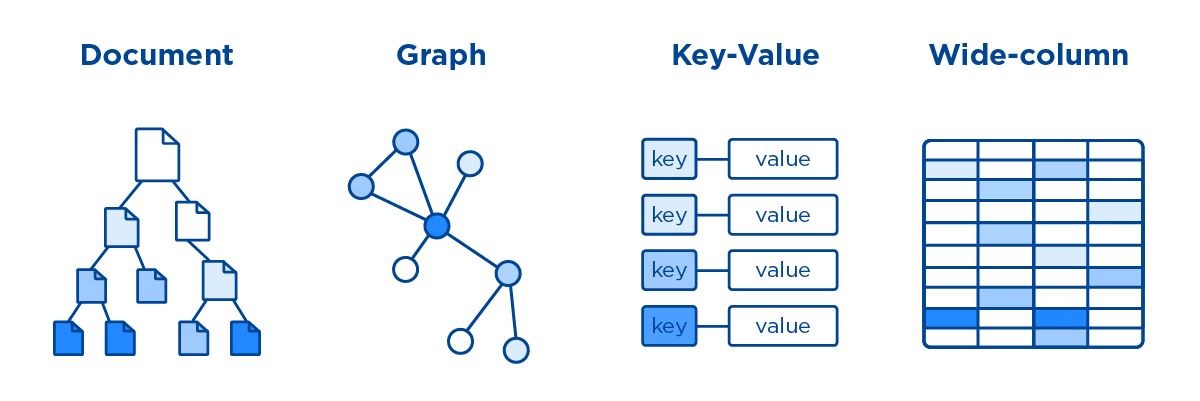NoSQL, an abbreviation for “Not Only SQL,” represents a diverse array of database management systems that diverge from the conventional SQL (Structured Query Language) databases. Unlike the structured tables with rows and columns characteristic of SQL databases, NoSQL databases are engineered to handle various forms of data—structured, semi-structured, or unstructured.
The Evolution of NoSQL
The emergence of NoSQL databases coincided with a significant drop in storage costs in the late 2000s. Gone are the days of complex data models aimed at preventing data duplication. Instead, NoSQL databases prioritise developer productivity, recognising that developers increasingly constitute the primary cost in software development.
As storage costs plummeted, applications required storage and querying of increasingly vast amounts of data, arriving in various formats—structured, semi-structured, or polymorphic. NoSQL databases offer developers immense flexibility by accommodating large volumes of unstructured data seamlessly.
The surge in cloud computing’s popularity saw developers leveraging public clouds for hosting applications and data. To ensure application resilience, scalability, and intelligent data distribution across servers and locations, developers sought the ability to distribute data efficiently—a capability offered by certain NoSQL databases such as MongoDB.
Types of NoSQL Databases
NoSQL databases encompass various types, each catering to distinct data storage and management requirements. Over time, four major types have emerged:
- Document Databases: Designed to store data as documents, including JSON or XML documents, document databases facilitate flexible data storage. Examples include MongoDB and Couchbase.
- Key-Value Databases: Organising data into collections of records with unique keys for swift retrieval, key-value databases offer the flexibility of NoSQL while maintaining sufficient structure. Examples include Redis and Amazon DynamoDB.
- Wide-Column Databases: Allowing considerable variation in data structure within the same table, wide-column databases balance structure and flexibility effectively. Examples include Apache Cassandra and HBase.
- Graph Databases: Utilising graph structures to define relationships between data points, graph databases prove valuable for uncovering patterns in unstructured and semi-structured data. Examples include Neo4j and Amazon Neptune.

Why use NoSQL?
In today’s business landscape, customer experience stands out as a critical competitive differentiator, prompting a profound transformation across industries. Businesses engage in unprecedented levels of digital interaction with customers, partners, employees, and products, fueled by technologies such as cloud computing, mobile, social media, big data, and the Internet of Things (IoT).
Modern applications, unlike traditional enterprise software, share several characteristics:
- Support for simultaneous users, possibly numbering in the tens of thousands or even millions.
- Delivering highly responsive user experiences to a global user base.
- Ensuring constant availability without downtime.
- Handling semi-structured and unstructured data effectively.
- Rapidly adapting to evolving requirements through frequent updates and new features.
For example, consider an e-commerce giant like Amazon. Their vast product catalog, diverse customer base, and real-time recommendations necessitate a robust database system capable of handling massive volumes of data while delivering lightning-fast responses. NoSQL databases like DynamoDB allow Amazon to scale horizontally to accommodate millions of users simultaneously, store various types of product data, and analyse customer behaviour to provide personalised shopping experiences—all while ensuring constant availability and reliability.
In essence, NoSQL databases offer a versatile solution tailored to the demands of contemporary, data-intensive applications, enabling businesses to thrive in a rapidly evolving digital landscape.